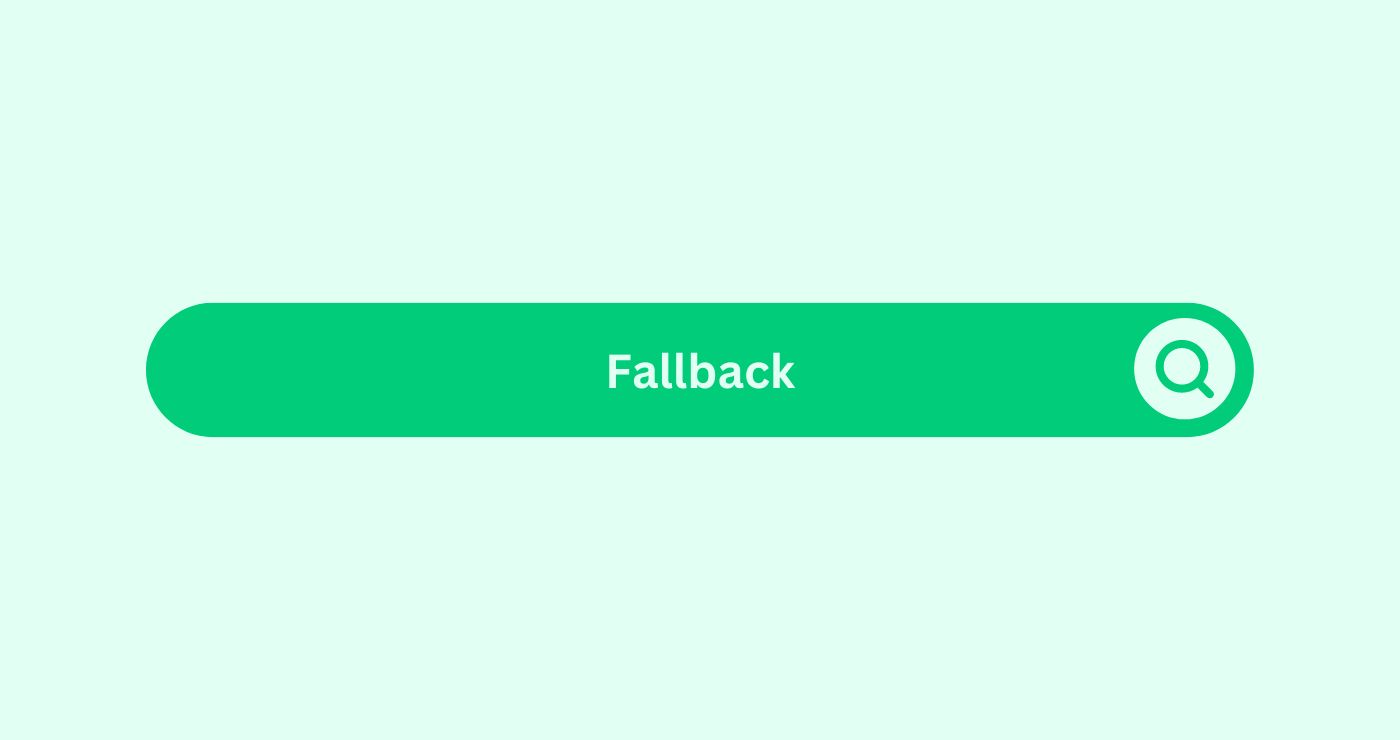Definition
A Fallback in the SEO space refers to a backup option or alternative action that is implemented when the primary method or resource fails to work as expected. This can occur in various scenarios, such as when a webpage is not accessible, a resource is unavailable, or a script fails to execute. Fallbacks are crucial for ensuring that a website continues to function smoothly and provides a consistent user experience even when unexpected issues arise.
In web development and SEO, fallbacks can be applied to various elements such as fonts, images, CSS styles, and JavaScriptJavaScript is a versatile programming language that plays a .... For instance, if a custom font fails to load, a fallback font specified in the CSS will be used instead. Similarly, if a primary image fails to load, an alternative image can be displayed. These measures help maintain the aesthetic and functional integrity of a website, thereby supporting overall SEO efforts.
How You Can Use
Fallbacks can be used to enhance the robustness and reliability of your website, ensuring that it remains functional and user-friendly even when certain resources fail to load or execute properly. Implementing effective fallbacks can improve user experience, reduce bounce rates, and support better SEO performance.
Example:
Imagine you have a website that uses a custom web font hosted on a third-party serverDefinition A Server in the SEO space refers to a computer sy.... If the serverDefinition A Server in the SEO space refers to a computer sy... goes down or the font file fails to load, users might see the default browserDefinition A browser is a software application used to acces... font, which could negatively impact the site’s design and user experience. To mitigate this, you can specify a series of fallback fonts in your CSS. Here’s an example of how you might set this up:
cssCopy codebody {
font-family: 'CustomFont', 'FallbackFont1', 'FallbackFont2', sans-serif;
}
In this example, if ‘CustomFont’ fails to load, the browserDefinition A browser is a software application used to acces... will try to use ‘FallbackFont1’. If that also fails, it will try ‘FallbackFont2’, and if all specified fonts fail to load, it will default to a generic sans-serif font. This ensures that the text remains readable and the user experience is not significantly impacted.
Formulas and Calculations
While there are no direct mathematical formulas for implementing fallbacks, the process involves logical structuring and prioritizing of resources. Here’s a step-by-step approach:
- Identify Primary Resource: Determine the main resource you want to use (e.g., a custom font or primary image).
- Specify Alternative Resources: List alternative resources in order of preference.
- Implement in Code: Use appropriate code syntax to ensure the browserDefinition A browser is a software application used to acces... can fall back to the alternatives if the primary resource fails.
For example, in CSS:
cssCopy codefont-family: 'PrimaryFont', 'SecondaryFont', 'TertiaryFont', sans-serif;
Key Takeaways
- Improved User Experience: Fallbacks ensure a seamless user experience even when primary resources fail.
- Enhanced SEO Performance: By maintaining site functionality and usability, fallbacks support better SEO metricsWhat are Metrics in the context of SEO? Metrics in SEO refer... such as reduced bounce rates.
- Robust Website Design: Implementing fallbacks makes your website more resilient to external issues and resource failures.
- Cross-Browser Compatibility: Fallbacks help ensure your website works well across different browsers and devices.
- Ease of Implementation: Fallbacks are relatively easy to implement and can significantly enhance site reliability.
FAQs
What is a Fallback in SEO?
A fallback in SEO refers to a backup option or alternative action used when the primary method or resource fails.
Why are Fallbacks important for a website?
Fallbacks ensure that a website continues to function properly and provide a good user experience even when certain elements fail to load or execute.
How can I implement a font fallback in CSS?
You can specify multiple font options in the font-family property, listing them in order of preference.
What are some common uses of fallbacks in web development?
Common uses include fallback fonts, fallback images, and alternative styles or scripts.
How do fallbacks impact SEO?
By maintaining functionality and user experience, fallbacks help improve SEO metricsWhat are Metrics in the context of SEO? Metrics in SEO refer... like bounce rateDefinition Bounce Rate in social media marketing refers to t..., time on pageDefinition In the realm of SEO, time on page refers to the a..., and user engagementDefinition Engagement in content marketing refers to the deg....
Can I use fallbacks for images?
Yes, you can specify alternative images in your HTML or CSS to be displayed if the primary image fails to load.
What is a fallback font?
A fallback font is an alternative font that is used if the primary web font fails to load.
How do fallbacks enhance cross-browser compatibility?
Fallbacks ensure that if a resource is not supported by one browserDefinition A browser is a software application used to acces..., an alternative can be used, maintaining site functionality.
Are fallbacks difficult to implement?
No, fallbacks are typically straightforward to implement and involve adding alternative resources in your code.
What should I consider when setting up fallbacks?
Consider the user experience, the order of preference for alternatives, and testing across different browsers and devices to ensure effectiveness.




